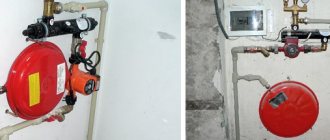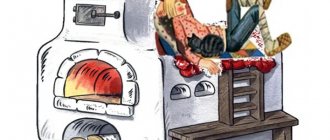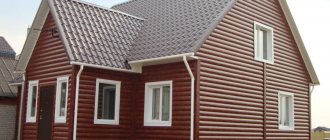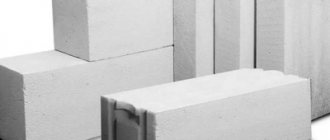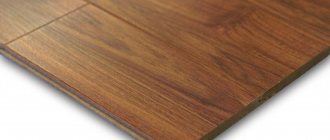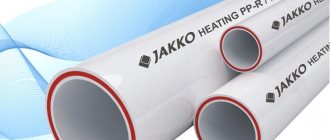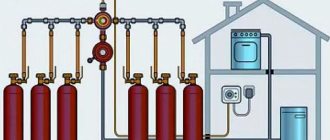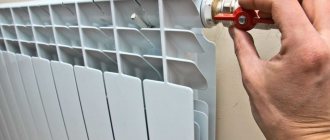Homemade stoves are a thing of the past. Today, gas heating is one of the most effective ways to heat and heat water in a private home. True, despite the fact that the resource is inexpensive, sometimes the equipment malfunctions.
Most often we are talking about outdated models. Therefore, residential property owners are faced with the question of how to choose a gas boiler for heating a private home that is simple, cheap and economical.
We recommend: What rules must be followed when replacing an old gas boiler with a new one
In this article, we will look at several popular models and show you how not to make a mistake in your choice.
general information
In the absence of gas supply, owners use other economical methods of heating their houses. Several alternatives are used. They differ radically in the organization of the system and in cost.
When choosing an economical method of heating a house, you need to rely on the following criteria:
- climate;
- maximum sub-zero temperature;
- budget.
Based on these parameters, a suitable economical option for providing heat in the house is selected. There are many effective heating methods. Here's some brief information about each of them.
Why electric heaters?
You will immediately ask yourself why classic water or stove heating of rooms is not considered? The answer is simple - this is due to the fact that installation work and maintenance for approximately the same money will be reduced to a minimum.
Now we will provide several reasons why it is obvious that the best and most economical heating system for a private home is electric.
- Electric heaters are silent, do not require additional resources (coal, firewood, liquid fuel) and do not pollute the atmosphere. This means that in a private house there is no need to have space in the utility room for fuel, make a chimney, and also remove soot every year. All you need to do is connect the system to the network and enjoy the warmth.
- Installing an entire electric heating system does not require a huge upfront cash investment. For example, installation of a water heating main is carried out once. A project is created, all pipes, radiators, a boiler, as well as additional automation are purchased. You will not be able to complete part of the work (for example, in one room), and if you have money, you will not be able to complete the project over time, and if you succeed, many problems will arise. It will be necessary to drain the water, cut into the finished highway, etc. In the case of electric heaters, everything is much simpler. You can install equipment in each room separately as you earn money. At the end of spring, buy convectors for the bedroom, later - for the kitchen, bathroom, etc.
- Today there are many ways to save on energy consumption. Of course, this option requires considerable expenses, but rest assured, over time they will pay for themselves. The installation of economical two-tariff meters, as well as solar panels on the roof of the house, is popular.
- You can connect a boiler, boiler or even a convector yourself, significantly saving money on calling a technician.
As you can see, electric heating in a private home really outperforms alternative options, so installing such a system is quite profitable.
Homemade economical electric battery heating system
Solid fuel boilers
One of the traditional and economical ways. The heating system is similar in design to the one with a gas boiler. It is distinguished by the installation of a heat generator that runs on solid fuel.
This method of economical home heating has the following features:
- fuel is added to the stove once a day;
- For long-term heating, choose equipment with a long-burning function.
Such models not only provide comfort, but are economical, as they slowly consume peat briquettes or ordinary firewood.
The most economical way is considered to be a pellet boiler. These are small wood pellets that the home owner pours into the tank. After that, they are fed in portions, using automation, into the boiler. Thanks to this, a person does not need to add fuel to the tank every day.
An additional feature of fuel tanks is the presence of a capital chimney. It is important not just to arrange such an element in the structure. It is required to periodically clean it of soot.
Heating using boilers requires wood or peat. Accordingly, this economical method is ideal for residents of those regions where the price for this type of fuel is acceptable.
Heating a house using solid fuels is inexpensive, but troublesome in terms of maintenance. If you buy equipment that does not support long-term combustion, you will have to heat it a little more often, the amount of wood spent will be decent.
Renewable heat sources
When calculating the costs in detail with heat pumps, wind turbines, solar collectors and batteries, the situation looks like this. They generate heat and electricity for a private home, but at first glance it is free. Of course, the sun and wind do not bill for heating, but such generation equipment is very expensive.
In Europe, renewable energy is sometimes subsidized from the state budget. Plus, the price tag for fossil fuels is frankly stinging. Therefore, “green technologies” there are economically justified and relatively effective.
In Russia the situation is radically different. Our state is not yet going to subsidize alternative energy. And prices for domestic firewood, coal and gas, compared to their neighbors in the west, are not so high.
As a result, based on the totality of all costs, it is difficult to call heat pumps, solar panels and wind turbines particularly economical. They generally show their effectiveness only in remote areas where it is difficult and expensive to deliver burned fuel.
Heat pumps
This solution is widely used in Scandinavia, which is quite cold. Using a heat pump, you can provide autonomous and economical heating of your home. It requires electricity to operate.
Features of this home heating option:
- it is recommended to purchase and install a ground source heat pump;
- first, it is necessary to dig a trench on the site and lay pipes;
- thermal energy is released due to the difference in temperature of water passing through the pipes.
The efficiency of the soil pump does not depend on air temperature. You don't have to be afraid of severe frosts. In terms of cost, such a system is more expensive than most analogues. You can save on installation. An important advantage is the durability of the structure. A heat pump can operate normally for decades.
By installing a heat pump in a country house, you can get an autonomous, economical heating system. It requires a small amount of electricity to operate. And if you add solar batteries to the design, you will be able to partially not depend on electricity.
What about gas heating?
Natural gas is a clean fuel, and boiler operating costs are limited to setting the desired temperature and maintenance. It is not surprising that where there is a gas pipeline network, gas is the natural choice as the most economical heating. Moreover, the local development plan, as a rule, prohibits the use of solid fuel.
However, the problem is that outside of urban agglomerations, only about 20% of our country’s residents have access to the gas network. Although the infrastructure is being expanded, we should not expect any major changes in the near future. Therefore, areas with access to gas are clearly more expensive.
From a utility point of view, natural gas is not much different from liquefied petroleum gas (LPG), i.e. propane used in the gas industry.
LPG boilers
It is enough to change the nozzles, adjust or replace the electronic module in some models. As a result, a conventional natural gas boiler will turn into a liquefied fuel option. This is a great advantage if we look forward to expanding the gas network in our region. At any time, the boiler can be converted back to natural gas and this will save us a lot of money than if we ineffectively changed the entire equipment every time.
In order to use liquefied gas, we need an internal tank and there are two fundamentally different options. We can rent it from the gas supplier for a small fee. However, in this case we are obliged to enter into a long-term contract. The cost of the cylinder is actually added to the price of gas. This is not always cost-effective.
The second option is to purchase a tank as your own. Then we will be able to freely change the supplier, and the fuel will obviously be cheaper. The price of heating in this case is comparable to the price of natural gas. However, the tank, its installation and the implementation of the project will cost a decent penny. Thus, investment costs increase significantly, since the boiler itself will be purchased for less than half this amount. Which option will be more profitable and economical - we must evaluate ourselves.
Advantages of condensing boilers
Nowadays, gas boilers are devices with very high efficiency, not too expensive and do not require maintenance. Condensing boilers with closed combustion chambers predominate. They are not only more economical, but also safer. In their case, the boiler takes in the air required for combustion directly from the outside and does not affect the operation of ventilation in the premises.
Where does efficiency greater than 100% come from? This is the result of using condensation, i.e. condensation of water vapor contained in flue gases, and thus recovery of part of the heat. In the past, this heat was considered wasted heat and was not taken into account when calculating efficiency. Consequently, more than 100% efficiency, in the strict sense of the word, contradicts the laws of physics.
The more hydrogen contained in the fuel, the more water is formed as a result of condensation. Therefore, it should be used when burning natural gas, the main component of which is methane - CH4, and this loses its meaning in the case of solid fuels containing mainly coal.
However, remember that condensation has two important problems. The temperature of the water in the circuit cannot be too high, since the phenomenon of condensation of water vapor from the flue gases occurs at a temperature of about 55°C (the most important thing is the return temperature to the boiler). We must therefore take into account the fact that we will be using them entirely in low-temperature installations that have surface or special heating, or at least large radiators. Fortunately, the savings will also be smaller in a typical radiator system.
The second is the chimney itself. The pipe from an old boiler may not be sufficiently resistant to condensate and not sealed enough. In the future, to increase the efficiency and economy of heating, it is necessary to replace it with another one or equip it with a cartridge.
Heat pumps for autonomous and efficient heating
A heat pump is a device that efficiently and safely removes heat from the environment and transfers it inside a building. In fact, a household refrigerator does the same thing, but on a much smaller scale - it cools the food it contains, and the heat is transferred from the back wall of the case to the condenser. Therefore, the mechanism of operation itself is well known.
In the case of heat pumps we are talking about the so-called bottom source and top source. The lower source is the element of the environment from which we receive heat. The top one is the installation of heating in the premises, i.e. underfloor heating or radiators.
As a general rule, the smaller the difference in temperature between the lower and upper sources, the more economical the pump is. In this case, even a few degrees make a big difference. In addition, most pumps are not suitable for temperatures above 50°C. Hence the popularity of low-temperature surface heating, usually underfloor heating. However, surface heating can also be ceiling or wall heating, usually in the form of thin pipes hidden in the plaster.
Contrary to popular belief, heat pumps can also work efficiently and economically with wall-mounted radiators, but they must be of a special type. Radiators with silent fans that cause air movement and heat exchange are definitely the best choice. For them, a flow temperature of approx. 40°C. In addition, some heaters of this type are so-called fan coil heaters, which are used for cooling when chilled water is supplied to them in the summer. Using low temperature radiators, especially in existing homes, is the easiest and most optimal way to ensure good operating conditions for the heat pump.
As for the lower source, i.e. element of the environment from which we will receive heat, then we are limited by the conditions of the site. The pump can be used:
- Outdoor air - can be installed anywhere, which is especially valuable in already developed areas;
- In the ground - when laying pipes horizontally on a surface of several hundred square meters or when drilling deep wells. The first option requires, firstly, a very large plot of land, and the second option requires investment in drilling;
- In water - theoretically, a very good solution, because underground or surface water is an excellent coolant. In practice, however, water is available in sufficient quantity and free of pollution on very few areas of land.
In the past, air pumps were primarily chosen by owners of remodeled homes. It is thanks to the simplicity and cost-effectiveness of installation. However, today they are increasingly found in new houses, since these pumps can heat up even at -25°C outside. Of course, with much less efficiency than when the ambient temperature is higher. On the other hand, the advantage of pumps operating on ground or water is the stable and sufficiently high temperature of the lower source, which leads to more economical operation.
However, the difference in investment costs is large. For an air/water pump with a power of about 10 kW, we will pay about 300,000 rubles along with installation. If we decide to drill wells, we will have to pay twice as much. Whether it will be returned in lower denominations depends on individual calculations.
Benefits of electric heating
The greatest advantages of electric heating are simplicity of design, heating efficiency and low investment costs. They should be chosen in homes with low energy consumption or as a supplement to heating.
Electric heating is available in many types, differing significantly in technical characteristics and ease of installation:
- Electric boilers;
- Heating mats (mobile heated floor);
- Electric ovens;
- Heating cables and film built into the floor (warm floor);
- Electric convectors of various types.
Boilers can heat both radiators and underfloor heating, and at the same time work effectively in one installation, for example with a water jacket fireplace or a backfill boiler. This is a frequently chosen economical solution because it is possible to run a completely maintenance-free heating system at a low cost.
On the other hand, foot warming mats owe their popularity to the fact that they do not raise the floor level. This is certainly the simplest and most economical heating option if we want underfloor heating to be used only in selected rooms (for example in the bathroom). Also in renovated houses and rented apartments, this is a very easy to use and effective solution for spot heating.
Storage stoves and pipes built into a thick seamless floor provide a kind of storage heating. Thus, we can cheaply heat the house almost exclusively with electricity at the second, night tariff. First a few hours of heating, then economical heat transfer for the rest of the day.
Automation of heating equipment as an efficiency factor
Automatic heating systems will help you save your family budget. They will maintain the set temperature in the room, turning off the heating when the temperature rises, and turning on the boiler when it drops. Such equipment allows you to save up to 30% on fuel consumption. The costs of automation quickly pay off.
The boiler controller tries to maintain optimal combustion parameters so that it is clean and economical. A room temperature controller takes care of maintaining the desired temperature in the house. The simplest are the so-called on/off regulators. More advanced regulators can send more complex information. They can change the boiler settings so that it lowers or raises the water temperature rather than just turning it off.
This allows you to increase the efficiency of boilers, especially condensing models. Savings and energy efficiency are even higher when automating heat pumps. They operate at the lowest possible water temperature in the circuit, but at the same time ensure that the set temperature inside the circuit is maintained.
Room controllers measure the temperature in the room, the interior of the house and compare it with the desired temperature. They work well with radiators because they respond quickly to changes in heat demand. The regulators measure the outside temperature, after which the boiler sets the boiler to the desired water temperature in the heating circuit to maintain comfortable conditions. This relationship between water temperature and outside air temperature is called the heating curve. The heating curve is selected manually or automatically for a specific building. We recommend automation especially for slow-responding underfloor heating. This allows you to act in advance and compensate for the greater inertia of the floor covering.
When using a heating system using underfloor heating, for heating efficiency it is recommended to install a thermal thermostat in each room and a common distributor. The thermostat monitors the temperature and transmits its value to the collector. The device reads the set parameters and closes the supply of thermal energy.
Rational house design is the key to energy efficiency
The main reason we build a house is to create a beautiful and comfortable home. The desire for its minimum energy intensity should not contradict this. It is important to know what affects energy consumption.
The most important thing is the design of the house, which is critical not only to how the house will look, but also how much energy it uses. The point is not only how effectively it will be insulated, but also the perfect interaction of all factors affecting the functionality of the house.
House orientation
Future energy needs will be influenced by the location of the house on the site and its orientation towards the main points. The ideal solution would be to direct the house with living spaces towards the Sun, south, southeast or southwest, which is not always possible on a plot of land. Therefore, it is not always possible to do this; finding an effective solution is the first important task of an architect or designer.
Form and Layout
Another factor in heating efficiency is the shape of the house, the roof and, above all, their segmentation. The separation increases the cooling surface of the building, which logically increases the energy requirement for heating. Internal layout can also help save heat: rooms with less heating should be located in the north, living rooms can use the heat of the sun's rays. A thoughtful design should allow the sun to penetrate deep into the interior space in winter, while ensuring that the house does not overheat unnecessarily in summer. This is possible either by designing the shape of the house itself - an overhang of the roof over glazed surfaces, or by effective shading from the outside - blinds, awnings...
Facade quality
A well-insulated house shell is undoubtedly a condition necessary to achieve low energy consumption and savings on heating costs. Important is the material for the external walls and individual components of the roof, windows, entrance doors and foundations of the house, which must also be sufficiently insulated. And it’s not just about the materials used, the precise implementation of the building envelope is equally important, whether the thermal bridges are sufficiently sealed and formed, especially around window openings, roof openings, thermal insulation, and parts of more complex shapes.
Ventilation without losses
Thanks to high-quality construction techniques, modern houses are so dense that the design of the house must take into account how much fresh air will be provided. Therefore, they must be equipped with ventilation systems, preferably with heat recovery from exhaust air.
The building solution influences the so-called specific energy requirement for heating. But what the actual energy consumption will be depends on the method of heating, water heating, ventilation of the house... Therefore, it is impossible to design a house without considering the method of efficient heating. How the house will be heated and ventilated must be decided in the design of the house.
Increasing savings by insulating a building
With any choice of heating system, you can save a lot by making sure that the resulting heat does not escape through the floor, walls, or ceiling. That is, by insulating the building, the owner will spend less money on heating the room. Moreover, insulation can be done not only during the construction process. An already finished house is insulated in various ways, choosing the most effective one. This will help reduce fuel consumption during the heating season.
Insulating or replacing windows is also a good way to save on space heating costs. Especially when it comes to a heat pump or electric heating. A heat pump will probably not be able to provide comfort in a home with large, single heat losses reaching more than 100 W/m2. It will also not work in a cost effective manner. The same applies to heating with electricity, which, as an expensive energy source, should be used in well-insulated houses.
Electric boilers
A popular economical heating method. The system is simple and safe. During operation, no soot or gas appears, and there are no harmful emissions into the environment.
Features of this economical heating method:
- It is necessary to carefully and thoroughly think through and organize heating to ensure minimal energy consumption. Errors and failures will result in costs.
- The model and category of the boiler matters. In most cases, equipment with heating elements is used, which is inexpensive, but consumes a large amount of electricity. It is better to buy induction boilers. Here the bulk of the energy is spent on initial heating. After this, electricity consumption decreases.
Regardless of the type of boiler purchased, the owner receives a compact, easy-to-install device. There is no need to install a chimney. But a separate room is allocated to house the heating system, since electric boilers make noise during operation.
The use of electric boilers is an inexpensive and easy-to-install solution, an additional economical heating method. But, if the electricity supply is periodically cut off in the village, you should not use this option. There is a risk of being left in the cold without heating.
Reduced heat loss
It is impossible to choose a cheap heating method without investing in insulation and construction work.
It will not be possible to economically heat a house with electricity if the building does not have additional protection from the cold. 35% of heat loss occurs through the roof, 25% through the wall and up to 15% through the floor. These are big numbers that cannot be ignored. There are a large number of insulating materials and ways to use them.
You can use one of the following technologies for finishing the outside of a house or apartment:
- Wet facade. Insulation boards are glued to the wall, which are then nailed, reinforced, puttied and painted. Polystyrene foam, polystyrene foam or mineral wool are used.
- Ventilated facade. Here there is no direct contact with supporting structures. At a distance of 3-5 cm from them, a vertical structure is erected, consisting of a frame and basalt wool placed in it. On both sides the insulation is covered with a membrane film, and the outside is sheathed with a rigid finishing material.
- Fur coat made of polyurethane foam. The liquid is sprayed into a three-dimensional frame; after it hardens, it is covered with decorative slabs or panels. Today, polyurethane foam is considered the best insulation in all performance characteristics.
- Backfill. Expanded clay of fine and medium fractions is used to create a thermal insulation layer when arranging floors and ceilings. The material is inexpensive, but requires periodic replacement due to shrinkage and moisture absorption.
Even the most economical heating and insulation will not bring the desired effect if openings in the walls are ignored. It is necessary to install modern iron doors with internal filling and energy-saving double-glazed windows. They have a metal coating that traps heat inside the room and prevents cold from penetrating into it from the outside.
Solar panels
This economical way to heat a room is the most innovative. The owner receives autonomy regardless of utilities.
There are few disadvantages. They are directly related to the climatic conditions in the region of residence. Such an economical heating method can provide a building with heat only in the south of the country, where the sun shines most of the time, and in winter there is a slight cooling.
In the central climate zone of Russia, the returns from using solar panels are decreasing. They can only be used as an additional source of heat. It will provide the house with approximately 50% heat. In addition, solar collectors themselves are expensive, ranging from $500 to $1,000 per unit. And to obtain the optimal amount of thermal energy, several such batteries are needed. You will also have to spend money on installation. But it's not worth saving. Thanks to professionals, you can avoid problems during installation and operation, and not damage expensive equipment.
Batteries can heat water to a maximum of 60 degrees. To increase efficiency in this regard, it is recommended to add a circulation pump to the system. At the same time, the storage tank should be changed periodically, and this is an extra expense that cannot be avoided. Due to this, the method ceases to be the most economical.
Batteries are suitable as an additional heating method. With them you can reduce heating costs, nothing more.
Question of price
Domestic models will be the cheapest. Equipment produced in Europe is more expensive (sometimes several times). The cost is also affected by whether you are going to purchase a condensing or convection boiler. The classic type, convection, will cost less. Efficiency also affects the final cost. The lower the coefficient, the cheaper the equipment.
On average, foreign equipment costs 30-50 thousand rubles. The most expensive and high-quality devices will cost 100-120 thousand. Domestic models stay at around 20 thousand rubles.
Diesel boilers
This economical method is suitable for residents of those regions where inexpensive diesel fuel is available. Using a diesel boiler, you can heat buildings even in harsh winter conditions.
Features of this economical method:
- diesel boilers are expensive equipment;
- professional installation required;
- you need to allocate a separate room;
- installation must be carried out in accordance with safety conditions;
- Boilers require annual maintenance to ensure they remain efficient.
The system operates in a similar way to a car engine equipped with injection. As soon as the fuel supply is disrupted, heating costs automatically increase. Heating efficiency decreases.
An additional disadvantage is that the boiler pollutes the environment. This is comparable to the situation when a diesel truck is constantly operating on the site. The noise indicators from the diesel fuel boiler and from the operation of the burner are also significant.
The method is considered economical, but quite uncomfortable. If you correctly design a heating system using diesel boilers, the cost of heating will be comparable to using natural gas. If you make mistakes, heating costs will increase.
Steam boiler - what is it, features and principle of operation, where is it used? About all this in the link.
Manufacturing companies
Today on the market there are electric boilers from foreign companies Buderus, Kospel, Vaillant and Protherm, as well as domestic ones EVAN, RusNIT and ZOTA. Many of them have been producing their products since the last century, and some began their activities even earlier. Now more details about each:
- Buderus. This German company appeared back in the 18th century, when it founded production in the field of ferrous metallurgy. Already at the end of the next century, Buderus produced sectional cast-iron boilers, after which it became closely involved in the development and creation of various heating devices using solid, liquid fuel and electricity. Following the conquest of the native market, Buderus soon began selling its products abroad. In 2003, it was acquired by another industry giant, Robert Bosch GmbH. The parent company did not forget about the brand, they continued to develop it, and today Buderus boilers are among the highest quality on the market.
- Kospel. The first plant of this company appeared in Poland in 1990, then production was expanded to other countries. The main feature of this company’s products is the enameling of internal tanks with a special powder, making the coating incredibly durable and of higher quality than with the traditional wet method. In addition, most of the products of this brand are equipped with LCD panels, which makes operating the device much simpler and more convenient.
- Protherm. Prague manufacturer of heating equipment, founded in 1991. From the first year of operation, Protherm began developing and producing electric boilers. They were so loved by the local population that within 5 years the products appeared in stores in neighboring countries, and already in 1995 they could be found on the shelves of Russia and Ukraine. The boilers of this company are certified according to ISO 9001, which confirms the high class of their work.
- Vaillant. A family business that has been producing heating equipment for almost a century and a half. According to many tops, it is famous for its high quality materials, long period of uninterrupted operation and constant innovations in production. Most buyers note that what they like about Vaillant products is that it is almost impossible to find fault with them, their production is so well thought out and streamlined. This company has factories in China and many European countries, but it is worth noting that the products assembled in the Middle Kingdom are intended strictly for the domestic market and do not go beyond its borders.
- ZOTA. At first glance it may seem that this is a foreign brand, but products are produced under the name ZOTA. At the moment, five lines of electric boilers are produced with a capacity from 3 to 400 kW. Thanks to this, you can choose an electric boiler for any need and any facility, no matter whether it is a residential or industrial premises. According to reviews, ZOTA products are highly energy efficient and easy to use.
- EVAN. The company was founded in 1996 and today is one of the leaders among domestic manufacturers of heating equipment. It all started with a small enterprise, which subsequently grew to enormous proportions and in 2008 became part of the NIBE Industrier AB concern. Thanks to this, the production of boilers is now concentrated not only in Russia, but also in Europe, which makes them even better and more reliable.
- RusNIT. It is a subsidiary of , which, by the way, supplies products for Roscosmos. Thus, it provides technological facilities on which Tula engineers from RusNIT realize their inventive potential. It is worth noting that RusNIT products are becoming better every year, which is noted by both domestic and foreign buyers who choose their boilers.
LPG boilers
In terms of efficiency, this method of economically heating homes is better than using natural gas. But you need to take into account the nuances. It was they who prevented liquefied gas from becoming in demand as an economical heating method:
- For storage, a container is purchased - a gas holder. The larger its volume, the less often you need to order gas delivery.
- The tank is buried in the ground, which can cause difficulties due to the size of the tank.
- You will have to select a location not only based on the characteristics of the soil for digging, but also on the possibility of access by a refueling vehicle.
The costs here are high, because the gas tank is expensive. But this economical method is popular. Once the purchased installations pay off, monthly financial expenses for heating the house will be slightly inferior to natural gas.
Full autonomy. The owner must initially enter the appropriate settings. From now on, everything will function without human guidance. The main thing is to replenish the container with liquefied fuel in a timely manner.
Liquefied gas is an alternative to natural gas. If you have the financial opportunity, it is worth purchasing components and carrying out installation in accordance with the requirements. As a result, you can get affordable, safe heating of a country house.
Conclusions and recommendations
After conducting a comprehensive analysis, we can draw the following conclusions about choosing economical heating for a private home:
- Residents of the Russian Federation, whose houses are connected to gas mains, can continue to sleep peacefully - they cannot find a more economical method of heating. Unless you properly insulate your home in order to reduce fuel consumption. In the near future, natural gas will remain uncompetitive.
- The cheapest heating without mains gas is burning solid fuel. But for the sake of financial gain, you will have to sacrifice the time and effort spent on loading firewood and maintaining equipment. In this case, you should pay attention to long-burning solid fuel boilers and choose one of them.
- If you have financial capabilities, the best option for economical heating is a pellet boiler. If you have little space for storing pellets, then the issue can be resolved by periodically supplying pellets during the season, although the purchase cost will then increase.
- The best results in terms of efficiency are obtained by a combination of 2-3 energy carriers. For Russia, the most popular pair is solid fuel and electrics at a night rate. For Ukraine - electricity at night and natural gas during the day (including subsidies and without exceeding the limit of 3600 kW).
- You can only tolerate dirt and odors in the boiler room if you can get used oil inexpensively. Like diesel fuel, mining is not the best option for a residential building, unless you place the equipment in a separate building.
- Residents of the Russian Federation with above-average income can afford to heat their homes with liquefied gas for the sake of comfort. In Ukraine, this method is practically not considered as very uneconomical.
A combination of a wall-mounted gas and electric boiler, the second serves as a backup (night) source of heat.
At the moment, when energy prices tend to European ones, insulation of private houses is becoming increasingly important. This is also a way to get economical heating, because with low heat losses it becomes possible to constantly use an electric boiler with a water heating system or local electric heaters, which is very convenient.
